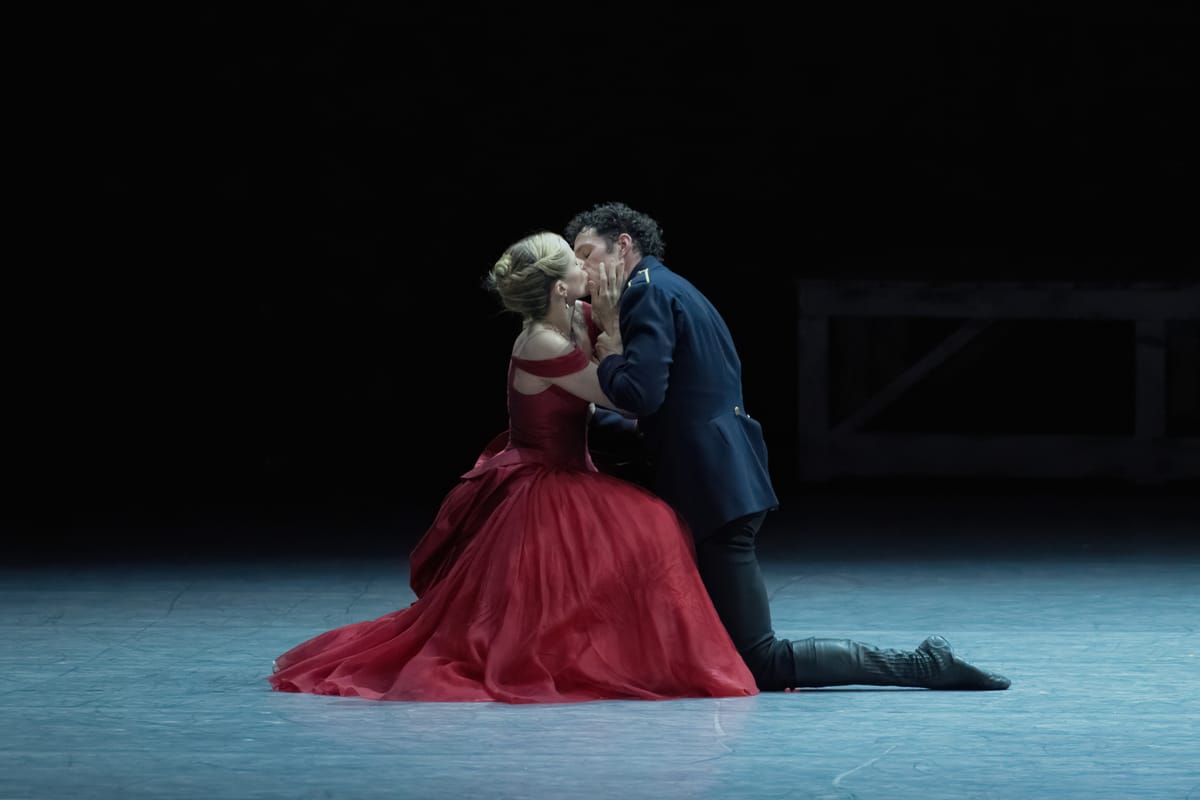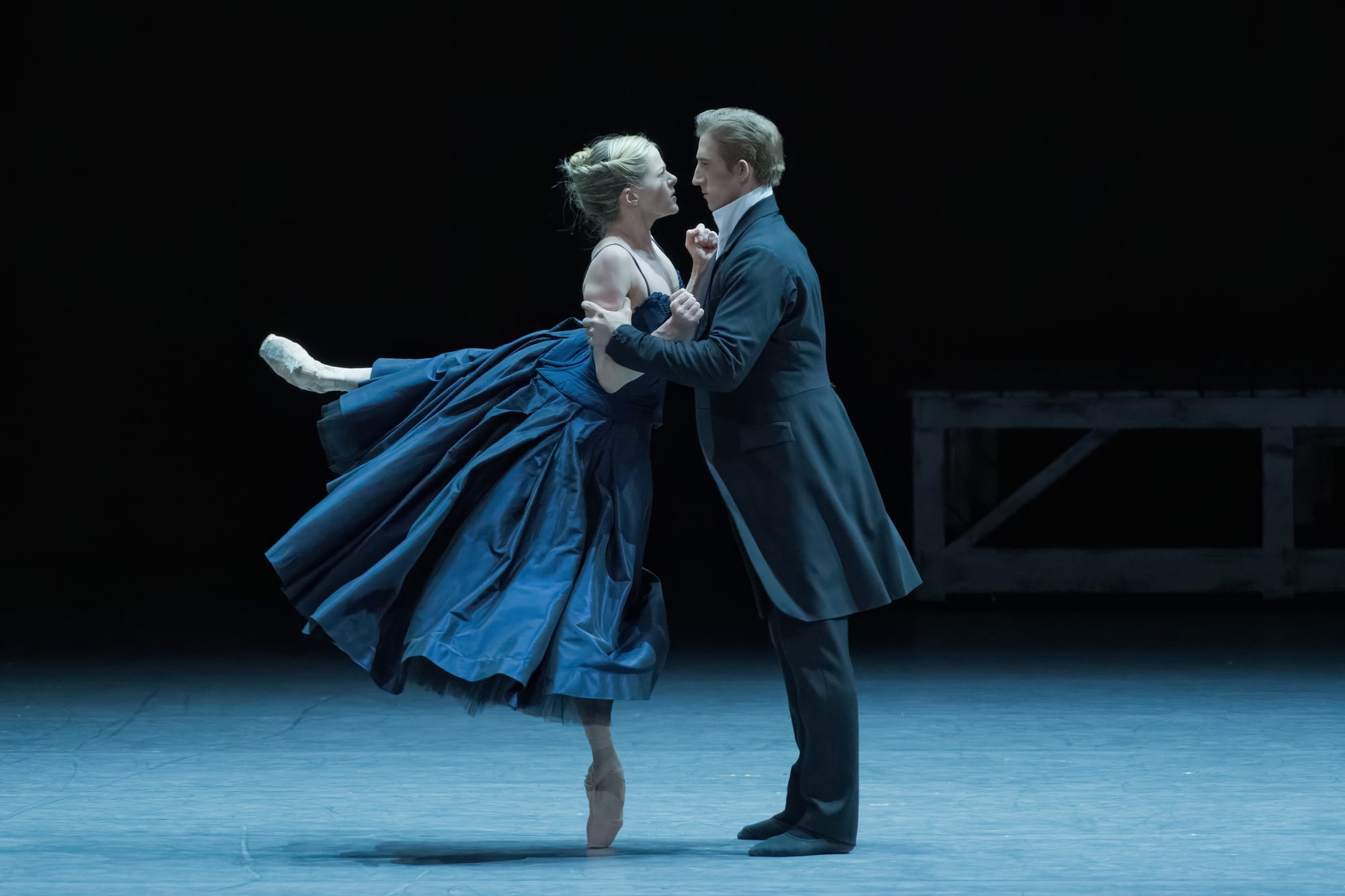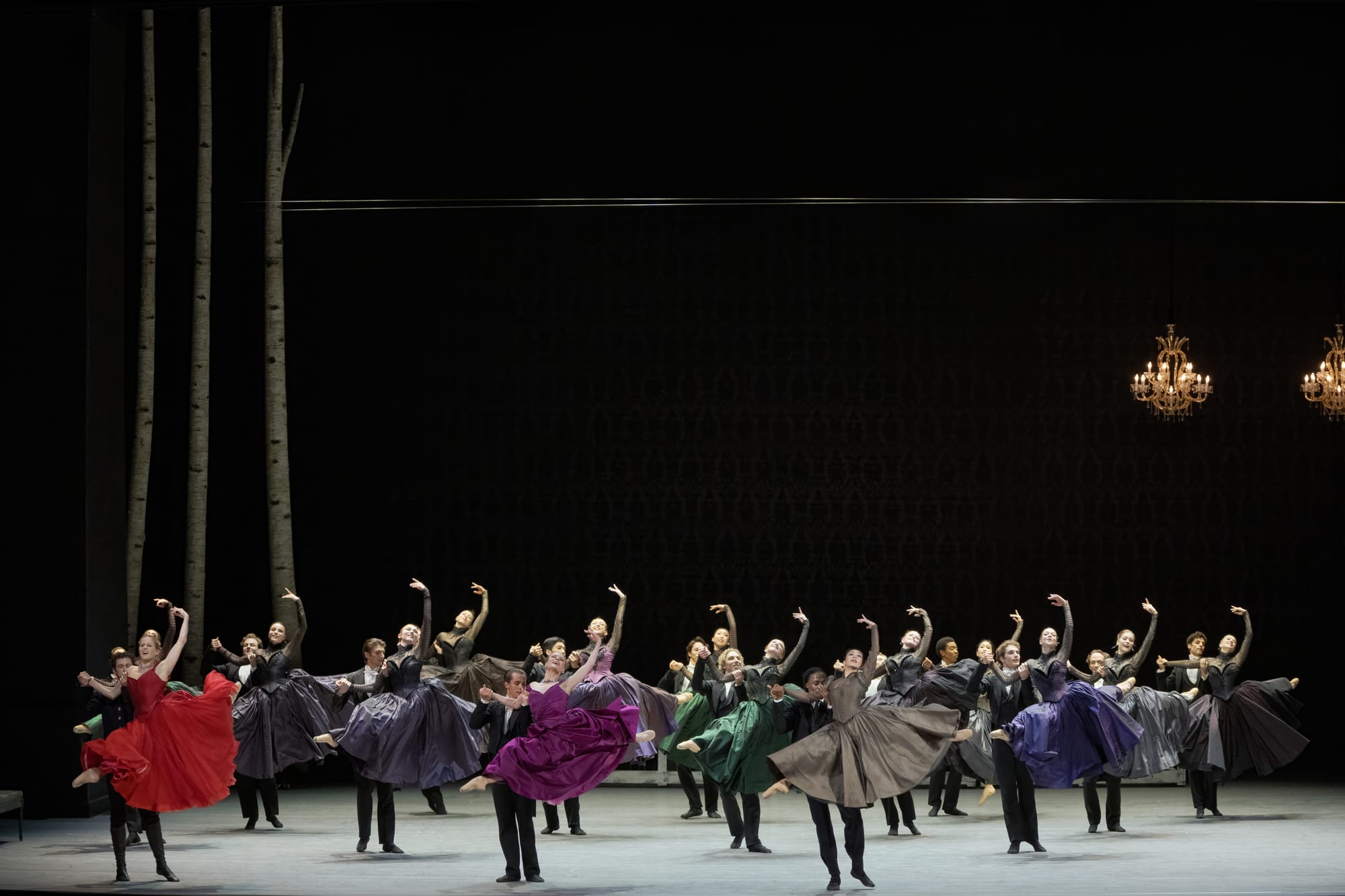Civilization and its Discontents

“Anna Karenina”
The National Ballet of Canada
Four Seasons Centre for the Performing Arts
Toronto, Canada
June 13, 2025
When “Anna Karenina” appeared on the National Ballet of Canada’s season schedule, it was a surprise that it was not the John Neumeier version that the company co-produced in 2018 alongside the Bolshoi Ballet and Hamburg Ballet. Instead, the NBoC announced that it would present the North American premiere of Christian Spuck’s 2014 version, originally created for Ballet Zürich and the Norwegian National Ballet. Neumeier’s version, while ambitious, was far from a hit. It ran too long, was inconsistent in its frame of reference and changed random aspects of Leo Tolstoy’s narrative seemingly for the sake of being different. Thus, an alternate version of “Anna Karenina” was a welcome change. Spuck’s vision of this tragic tale delivered on all fronts – it is visually arresting, choreographically and musically interesting, dramatically cohesive and succinct. Spuck, who now directs Staatsballett Berlin, has worked in opera and theatre and it shows. His interdisciplinary background is an asset when reimagining an epic narrative like “Anna Karenina”. Spuck’s production calls to mind the German concept of “total art” or gesamtkunstwerk – integrating music, movement, sets, costumes, video, lighting and storytelling into a whole that is greater than the sum of its parts.
This adaptation of “Anna Karenina” is only one hour and forty minutes (plus one intermission), so judicious decisions had to be made regarding what to include. Spuck worked with dramaturg Claus Spahn and chose to highlight the central love triangle of Anna, Karenin and Vronsky. Two contrasting relationships, that of Anna’s brother Stiva and his wife Dolly, and Dolly’s sister Kitty and her admirer Levin, act as counterpoints to Anna’s. This is one of those ballets where knowing a general synopsis of the plot beforehand helps. Without that background, one would have an impressionistic sense of the main characters but would not understand how they are related and certain details about their pasts. Spuck does manage to capture the emotional core of each character in a short period of time.
Spuck’s choreography is aided by excellent musical choices. The late 19th century clash between old world values and new directions in social order is reflected in the score, a mix of works primarily by romanticist Sergei Rachmaninoff and modernist Witold Lutosławski. The differing styles of music add to the central conflict of the ballet and create palpable quick changes in tone.
The costumes by Emma Ryott and sets by Christian Spuck and Jörg Zielinski are simple and effective, with strong, intentional use of color. The society scenes feature a lot of impeccably cut, formal black attire and elaborate hats and headpieces. Levin immediately stands out in his earthy brown palette as more grounded and connected with nature. In the ballroom scenes, the women are dressed in pastel gowns that are inspired by period dress without being too literal. Ryott uses beautiful fabrics that are crisp and structured while still allowing for movement and flow. Anna dons an assortment of dresses that parallel the different states of her internal world – a black and buttoned up frock when she is the dutiful wife of Karenin; a sexy, crimson off the shoulder number when she gives in to her passion and infatuation with Vronsky; a cream, flowing romantic gown when she retreats to Italy with Vronsky.
The sets feature clean lines and a minimalist style. As a result, the choreography looks more spacious and expansive. Nothing on stage is superfluous or merely decorative; everything serves a purpose. A plain hanging cloth appears at different times. Grainy black and white videos (designed by Tieni Burkhalter) are projected onto it, depicting different settings such as the train station, horse race or farm fields. Meanwhile, a multipurpose riser serves as a train platform, race track bleachers or a room in Karenin’s home.
A grand piano remains on stage for many of the scenes and I wondered why they would not have the piano soloist (the wonderful Adrian Oetiker) play it, instead of keeping him in the orchestra pit. After all, the soprano Emily Rocha appears on stage when singing, so why not have the pianist on stage too? Only in the final scene does Oetiker get on stage to play.
The role of Anna is complex and layered, perfect for a seasoned artist like Heather Ogden. While her approach to acting is more understated than others, it was quietly moving. She clearly communicated Anna’s suffocation in a stale and loveless marriage, which set things up for her to fall deep in lust, and then love, with Vronsky (Christopher Gerty). She made her characterization believable and nuanced. Her Anna really tried to resist Vronsky’s advances initially. One could see the tension she felt between her powerful desires and wanting to adhere to social mores. She gave weight not only to the sweeping and grand movements, but also small movements like when she finally took Vronsky’s hand after the ball. Later, she made the audience care about her pain when she was ostracized from society and descended into addiction. He suicide scene was chilling in its restraint.

Choreographically, her pas de deux with Karenin (Ben Rudisin, somewhat too young to believably dance this role) speaks volumes. It is a bit rigid and formal, but actually enjoyable to watch because of the degree of familiarity and comfort between husband and wife. While the steps are predictable, the phrases are harmonious and logical in the way a good ballet class exercise can be. In contrast, her pas de deux with Vronsky are electric. Ogden had great chemistry with Gerty. The ways she responds to his touch reads powerfully on stage. In the beginning of their second big pas de deux, the most erotic in the ballet, he simply brushes a hand along her bare upper back and she almost quivers. The pas de deux is filled with overhead lifts perfectly matching the swells in the music, Rachmaninoff’s “Rhapsody on a Theme of Paganini”. In the second act, Anna and Vronsky are in the honeymoon phase of their relationship, finally alone in Italy and able to indulge in their affair. There is a very long pas de deux for them, which starts off so classical and romantic, it looks like it was pulled from a balcony pas de deux from “Romeo and Juliet”. During the course of the pas de deux, we actually see the mood shift as Anna starts to become more clingy, insecure and doubtful of Vronsky’s affection. When she returns to Russia to see her son, a gut wrenching pas de trois with Anna, Vronsky and Karenin ensues. Ogden is a technically strong dancer. She knows exactly when to be on her leg and when she can throw herself off it. She is moving with greater power and freedom than her earlier days. Both Rudisin and Gerty were steady partners.
The great discovery of the evening was corps de ballet member Matthieu Pagès as Levin. It is an important role as Levin is the moral heart of “Anna Karenina”. Spuck gives him distinctive choreography with folk dance inspired steps and contemporary dance influenced floor work. Pagès’ solo variation in Act I was a highlight of the entire ballet, performed with sincerity and sensitivity. His French training is evidence in his placement, control and extension. Dancing barefoot, one could see how he used the full articulation of his feet to create beautiful, classical lines. As Kitty, Brenna Flaherty was perfectly cast. She captured Kitty’s youthful vitality and transformation from a flighty, impulsive girl to a down to earth and happily married woman. Together, in their quiet life removed from high society, Kitty and Levin seem to unlock the secret to contentment and peace. One cannot help but be charmed by the sight of them riding blissfully across the stage on a bicycle.
Tirion Law was surprisingly convincing as Dolly. She tends to be cast in younger, soubrette roles due to her diminutive size but she rose to the occasion here with impressive acting chops. She managed to create a multidimensional portrait of an overlooked and underappreciated wife. Her indignation at her husband’s dalliances was evidence in their tumultuous pas de deux. She grappled with feelings of resentment mixed with duty and eventually tenderness when she forgave him. As her husband Stiva, Shaakir Muhammad used confident, showy dancing to convey Stiva’s magnetism and thirst for attention.

As Princess Betsy and her companion, Hannah Galway and Jason Ferro were delightful to watch. However, the presence of their characters did not lend much to the narrative. The corps de ballet played an important role, whether depicting the toxic scrutiny of the upper crust (artfully portrayed in the horse race scene, with the dancers forming binoculars with their hands) or the pragmatic hard work of the farm laborers.
Tolstoy’s classic is handled with great care in Spuck’s production. While newer full length narrative ballets are often hit or miss, this “Anna Karenina” is certainly a hit and worth keeping in the active repertoire of the company.
copyright © 2025 by Denise Sum



